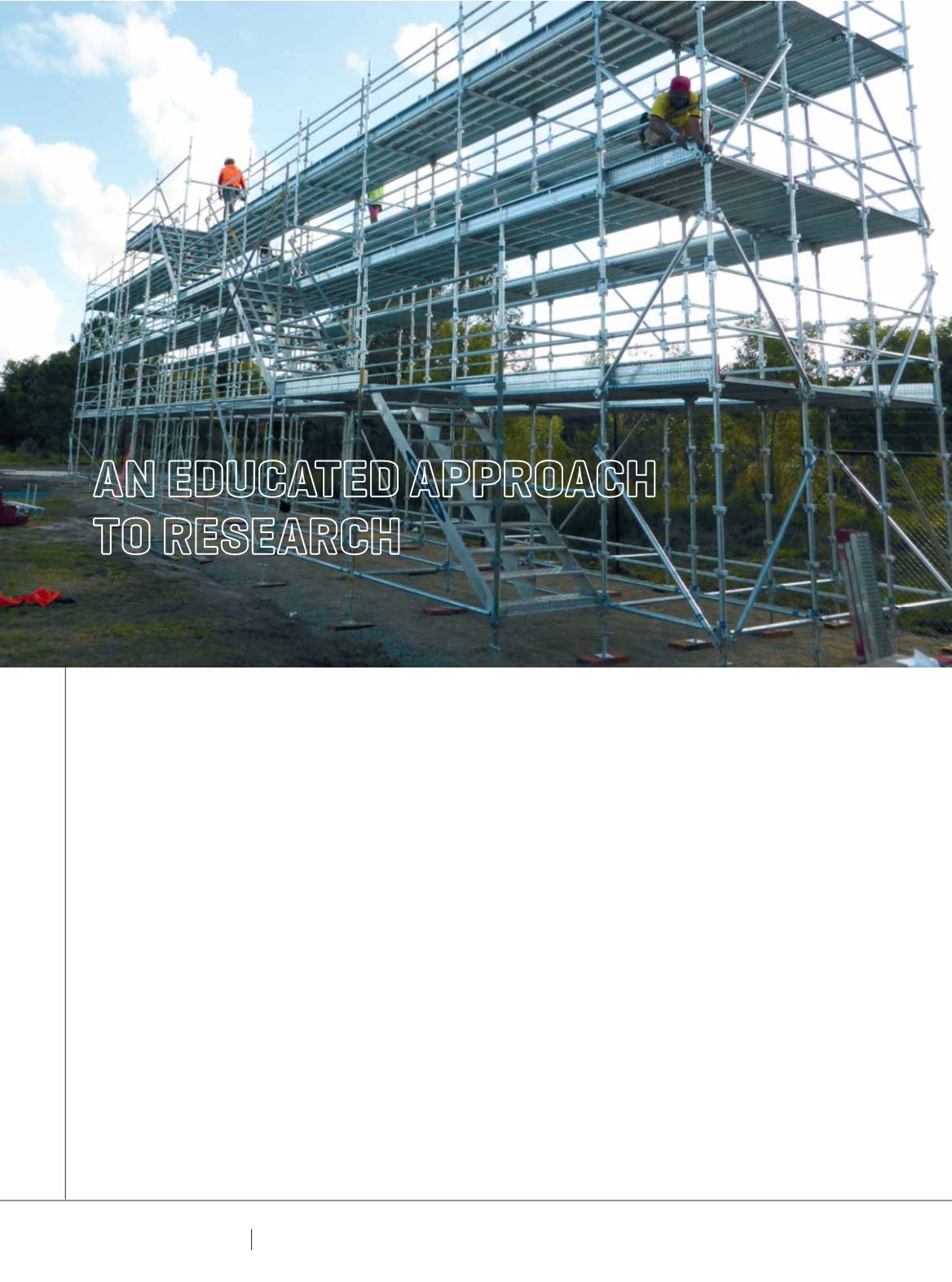

4 8
PLUMBING CONNECTION
SPRING 2015
AN EDUCATED APPROACH
TO RESEARCH
I
t was revealed in February that the Association of
Hydraulic Services Consultants Australia (AHSCA) and
the University of the Sunshine Coast (USC) had signed
an agreement to undertake cutting-edge research to
investigate, quantify and accurately predict the hydraulic
behaviour of roof water in box gutters and downpipes of
large buildings.
Both the AHSCA and USC recognised that the current
standard referenced in the Building Code of Australia, (AS/
NZS 3500.3) has significant limitations that have hampered
the broader construction industry for some time.
The specific components of roof drainage systems to
be investigated are internal box gutters, overflows and
downpipes. The primary focus of the research will be the
design restrictions relating to allowable maximum downpipe
sizes and the maximum flow rates for box gutters, overflows
and downpipes.
Some of the current restrictions include:
∫ Flow rates for box gutters are limited to 16 l/s.
∫ Flow rates for downpipes are limited to 16 l/s.
∫ Downpipe sizes are limited to 150 mm diameter.
∫ Flow rate for sumps and overflow devices are limited to
16 l/s.
∫ Recommended overflow configurations are considered to
be restrictive and do not reflect industry practice.
These restrictions severely limit the design options that
can be considered when designing roof drainage systems for
large buildings. As part of its responsibility and commitment
to its members, the AHSCA commissioned a comprehensive
research study to develop accurate performance and design
guidelines for roof drainage systems.
An integral part of the research project included the
development of a full-scale box gutter and downpipe test
rig at USC. The rig stands at over 25m in length and 7m high
and includes a fully-adjustable box gutter system with the
capacity for multiple outlets and downpipes. By developing
such a large test rig, it is possible for realistic flow conditions
of large buildings to be accurately established and simulated.
The design of the rig ensures complete flexibility in the
testing parameters and also allows for prototype testing of
rainwater products under authentic hydraulic conditions.
It is envisaged that alteration of these design restrictions
may substantially reduce the cost of roof drainage systems
and significantly minimise the risk of property damage
caused by water ingress through system failure.
If roof drainage systems are in fact capable of operating
more effectively and with greater capacities than the
current design standards allow, this research could lead to
significant reductions in unsustainable building practices
and construction costs.
THE ASSOCIATION OF HYDRAULIC SERVICES CONSULTANTS AUSTRALIA HAS TEAMED UP WITH THE UNIVERSITY
OF THE SUNSHINE COAST TO UNDERTAKE RESEARCH THAT WILL CHANGE THE WAY INDUSTRY APPROACHES ROOF
DRAINAGE SYSTEMS.
PLUMBING CONNECTION
WILL CONTINUE TO REPORT ON THE PROJECT ALONG THE WAY.
INDUSTRY RESEARCH
















